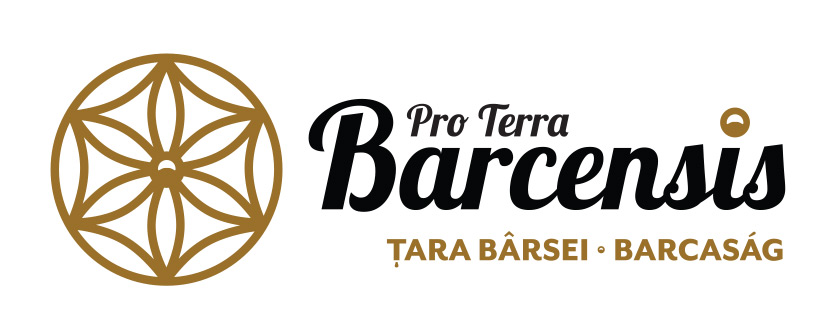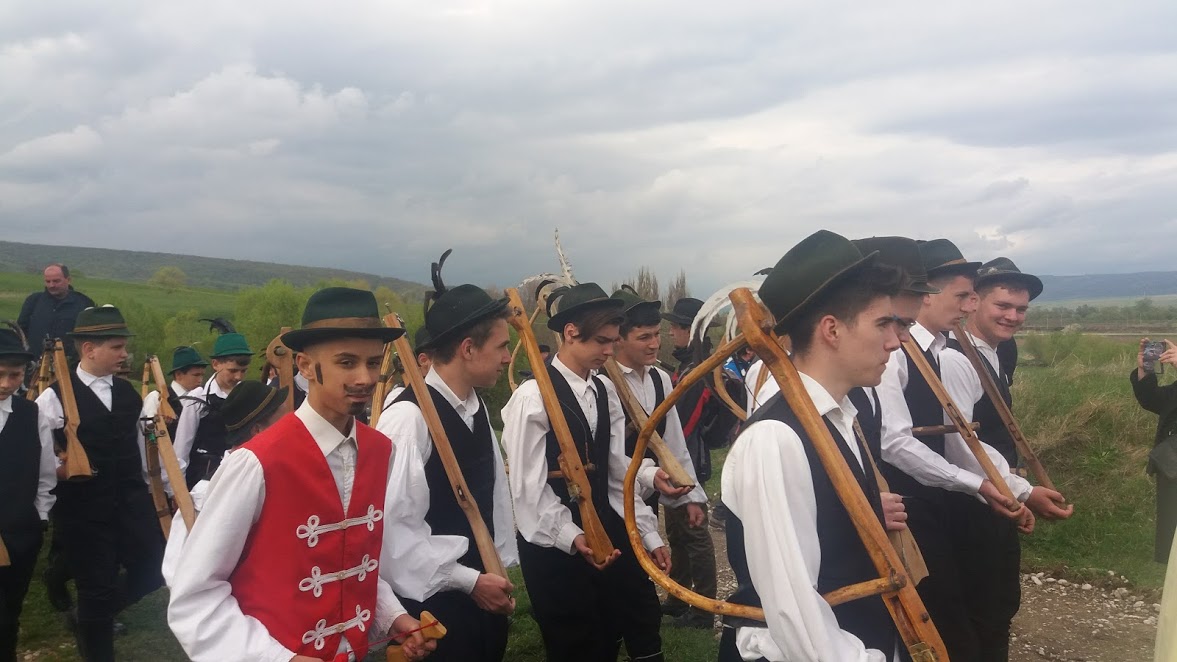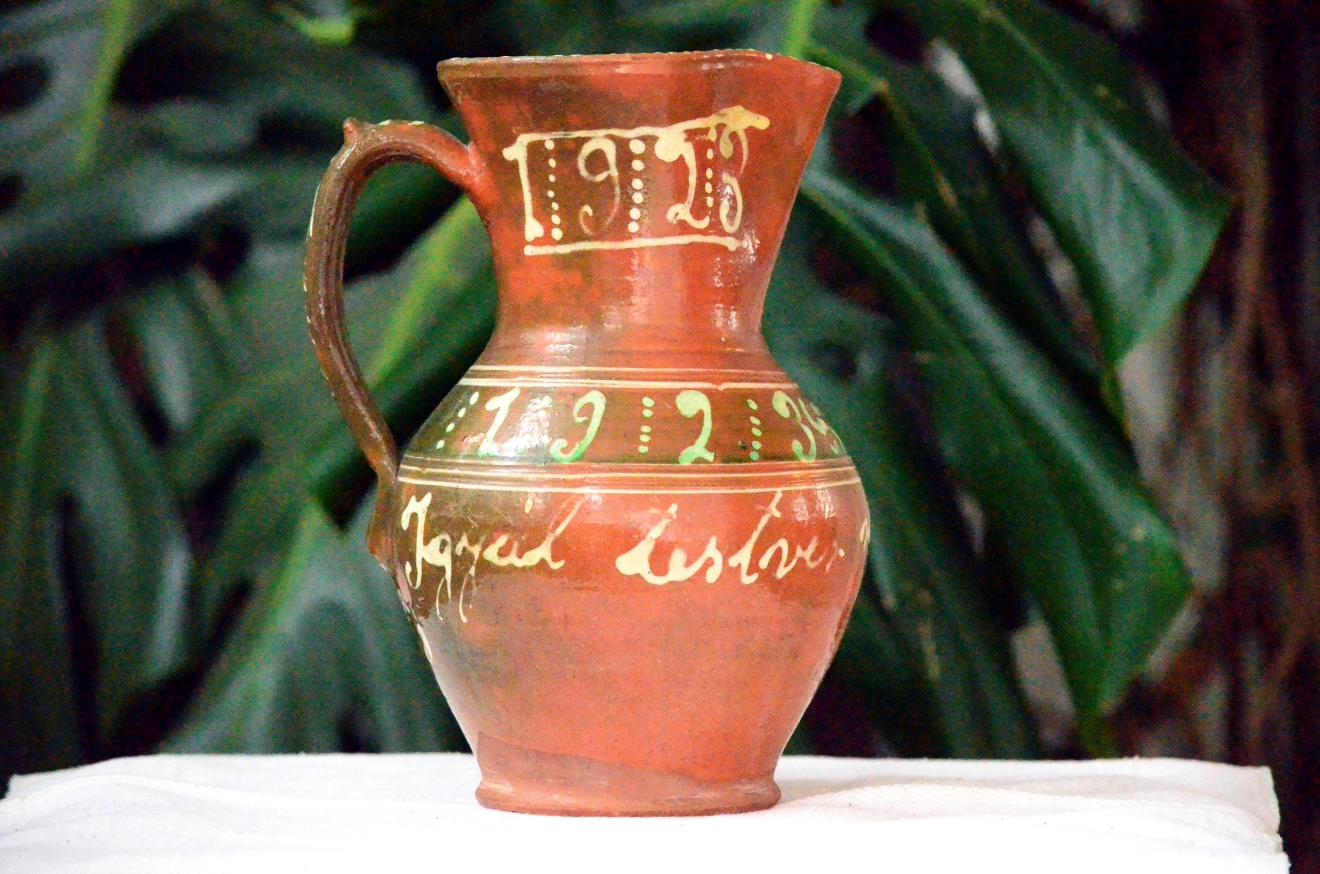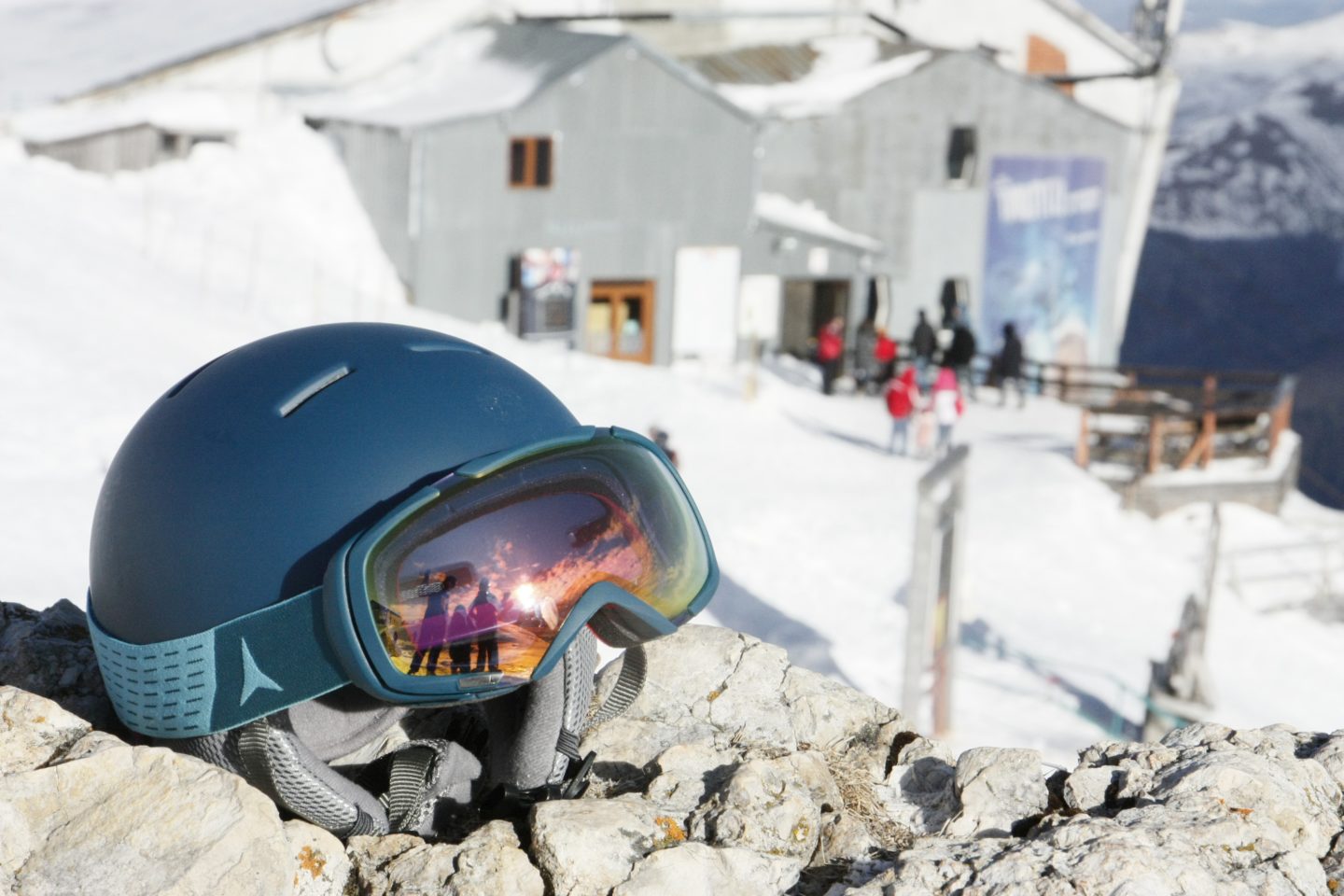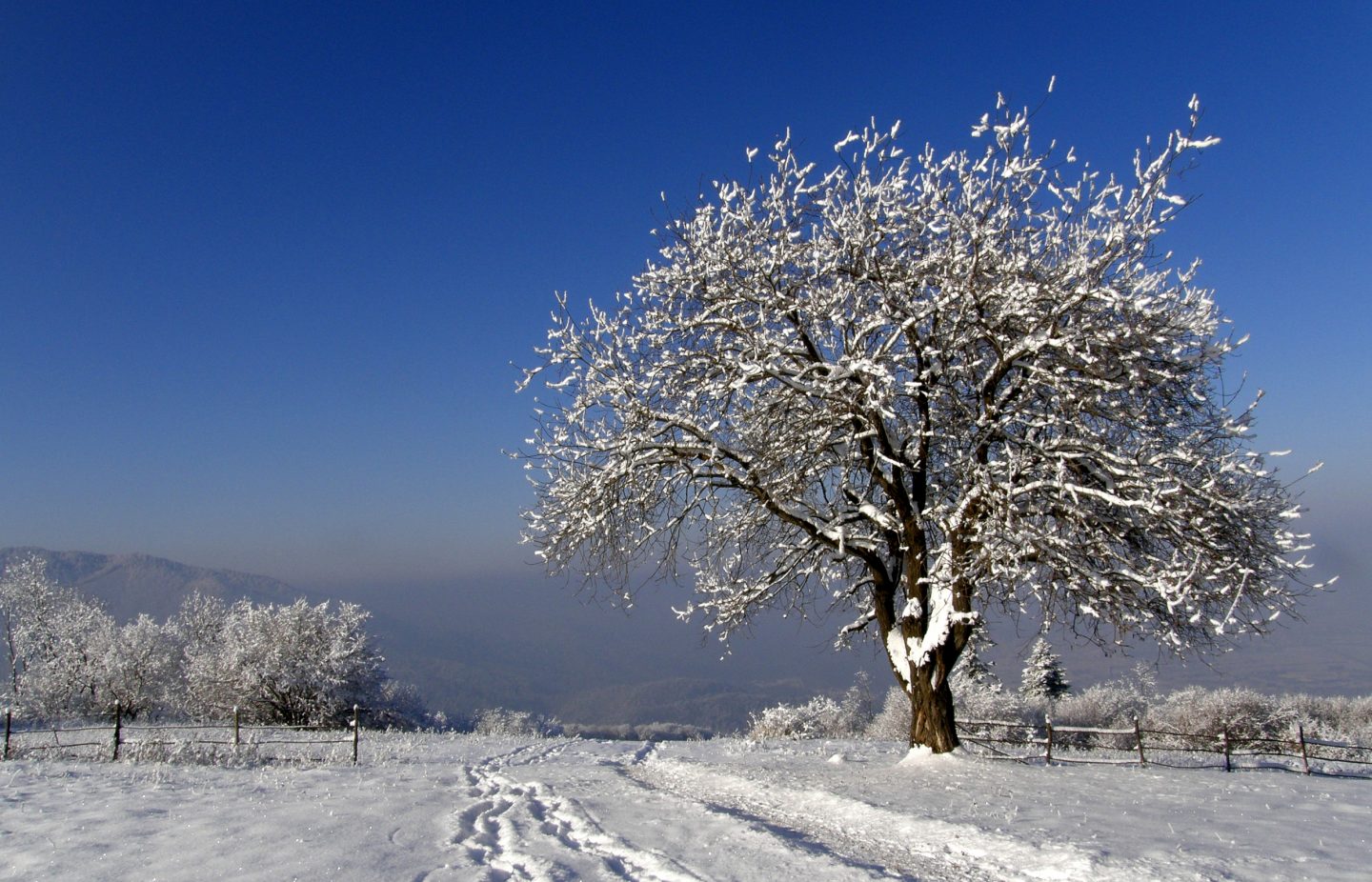
Folk costumes
A bouquet of colors from the long skirt to the popular Saxon harbor, which in turn was taken over by the inhabitants of the Barcaság (Țara Bârsei) from the Hungarian Renaissance era.
The national costume of women from Crizbav is very beautiful. Women and girls especially decorate their head and the hair, usually tied in a kuóda (queue), is wrapped on the upper part of the head. According to the old Hungarian tradition, a little wreath full with strings of beads is placed on it. During walking, the clinking beads rattle and make noise. Colored bows are sewn on the little wreath, hanging up to the ankle. Young women wear csepesz (bonnet) which – instead of the white veil worn in the working days of the week – is tied to a colored kerchief. Women also wear embroidered bonnet with a specific form. They braid a bun made of hemp as a semi-circle or horseshoe covered with a white fabric, fixed on the back of the bonnet. The white veil made of a soft fabric is placed on it, pressed by a red bow tied at the back, above the forehead. In general, this is attached to the bun with six very nice golden decorated pins, very nicely so that two are found above the bun and in twos laterally. In the summer, girls and young women do not wear a costume over the shirt. The girls’ shirts are decorated by sewing with purple red thread, antique arabesques and other plant motifs at the neck, cuffs and along the length of the arm. The skirt is made of blue fabric. A white apron is worn over it, which is decorated in the middle with grooves and lace on the edges. A belt with metal and semi-precious stone ornaments is placed over the linen dress. In the winter, women and girls wear a white leather sheepskin coat over the shirt. It is specific to the place that when women from Crizbav go to church to wear at the neck a purple scarf. The edge and the two ends of the white scarf sewn as a towel are artistically embroidered with colored threads. The men’ costume consists in the black hat with wide brim, sheepskin coat over the shirt fastened with the belt. On holidays they wear a black shirt front and white tight stockings. The priest Sexty Kálmán, who came from Hungary and served between1904-1941 at Crizbav, insisted to introduce the Hungarian costume in the difficult political times.
The inhabitants from Satu Nou kept the old Hungarian costume used by the Transylvanian Saxons. Men wear blue long cloak, Hungarian pants made of dark cloth of the Transylvanian Saxons not only during the week but also on Sundays. Their festive costume for church includes magyarka (long dolman with belt buckle) for men, the cloak for women and the velvet shako for girls. Those from Satu Nou happily wear both the festive Hungarian costume and the Hungarian clothing.
The men’ clothing from Apața is similar to those from Crizbav. Women’ clothing is also very similar, the bun, on which the bonnet is placed, is round and the veil on it is thicker. The girls from Apața place on their heads the specific garland, decorated with beads. In the case of holidays, they do not wear the purple scarf but place a white bed sheet on their back as a cloak. Pleated shirts are worn in La Apața, to which the neck part and cuff is pleated in different models.
The men from Seven Villages embërek (people) wear in the summer loose shirts made of hemp, gagya (undershorts) or white cloth stockings. The collar is rigid, closing in front with a ribbon with pompon. The shirt is long, worn outside, the lower part almost reaches the knees. The shirt is tied with a wide belt, with diészü (girdle). Money and documents were kept in it and the knife holder, namely the bag for the fire-making instrument, were attached to it. During cold weather, they wore cloth cloak, firiskuó made of linen, but they also knew the short and long kozsokul (sheepskin coat), embroidered with silk, the boys were wearing a (lombos guba) woolen cloak, worn they were wooing the girls and taking care of animals. They were wearing a black hat with wide brim and when it was cold, they were wearing a black or white fur hat. In the case of holidays, the clothing made of hemp was changed with that of linen in, which had a softer fabric. As a coat, white zekie (shirt front) was worn in Săcele and a black one in Three Villages. The footwear was egiéjszlábucsimma (long boot). During the winter, when going to the forest, long gyiébá was worn, sárigcérnás ing (shirt with yellow thread) at weddings and mejjes (shirt front), embroidered with red and green tulipánt (tulips) and decorated with buttons on the sides. The famous carriers from Seven Villages wore the leather cloak and szárika (woolen cloak).
The national costume of the Csango at the women from Seven Villages has two known options. The oldest is the costume with hámosrokoja (long skirt with harness) and the new one is the Transylvanian Saxon costume. In the special life occasions, the white color was dominant for clothing. The Csango woman from Seven Villages confirmed in white, got married in white and was buried in white. The girls had the hair braided in two, the women wore it in a bun, placing the bonnet over it. Girls were fixing their hair with a deep red or purple ribbon, young women tied their hair with a gold-embroidered bow, which was worn for two years, then changed with the deep red bow. For special occasions and on Sundays, women wore csepesz (bonnet) on their head, covered with a veil scarf. The chest was decorated with kösöntyű (women ornaments), jewels, they were wearing a belt with metal ornaments, from which they hanged bugyelláris (embroidered bags) or erszény (wallets). Rokoja (long skirt) of the girls and bride was white, black for the women in holidays, dark blue in the other days. The apron called katrinca (peasant woman’s skirt) was worn over the skirt. In the past, women wore ancient Greek sandals in their feet, then they used tanned sheep or goat skin boots. At confirmation, they wore the white shirt, long linen skirt, masining, firiskuó made of linen, linen long skirt and csipkesurc (lace apron) and velvet little wreath with red bows on their head. In the case of marriages, the special ornament for brides was black velvet shako and black cloak. On women’ shirts, the embroidery of pleated part verzselés (wrinkled embroidery) referred to the woman’s age: the girls’ shirts were embroidered with red, sewn together with red, the women’ shirts were embroidered with yellow, the edge seam was red and the old women’ shirts were embroidered with butter-like thread and decorated with white flounces.
Spiritual heritage
Rooster shooting - the general tradition of Barcaság (Țara Bârsei) - remained alive today only a...
Read moreSatu Nou (Barcaújfalu) the biggest pottery center in Țara Bârsei (Barcaság) was once, today ther...
Read moreIn addition to logging and farming, the main occupation of the Csángo's was carriage, and they carr...
Read moreThe "Borica" dance from the Seven Villages is an archaic man dance. Today it is practiced only in...
Read moreVillage
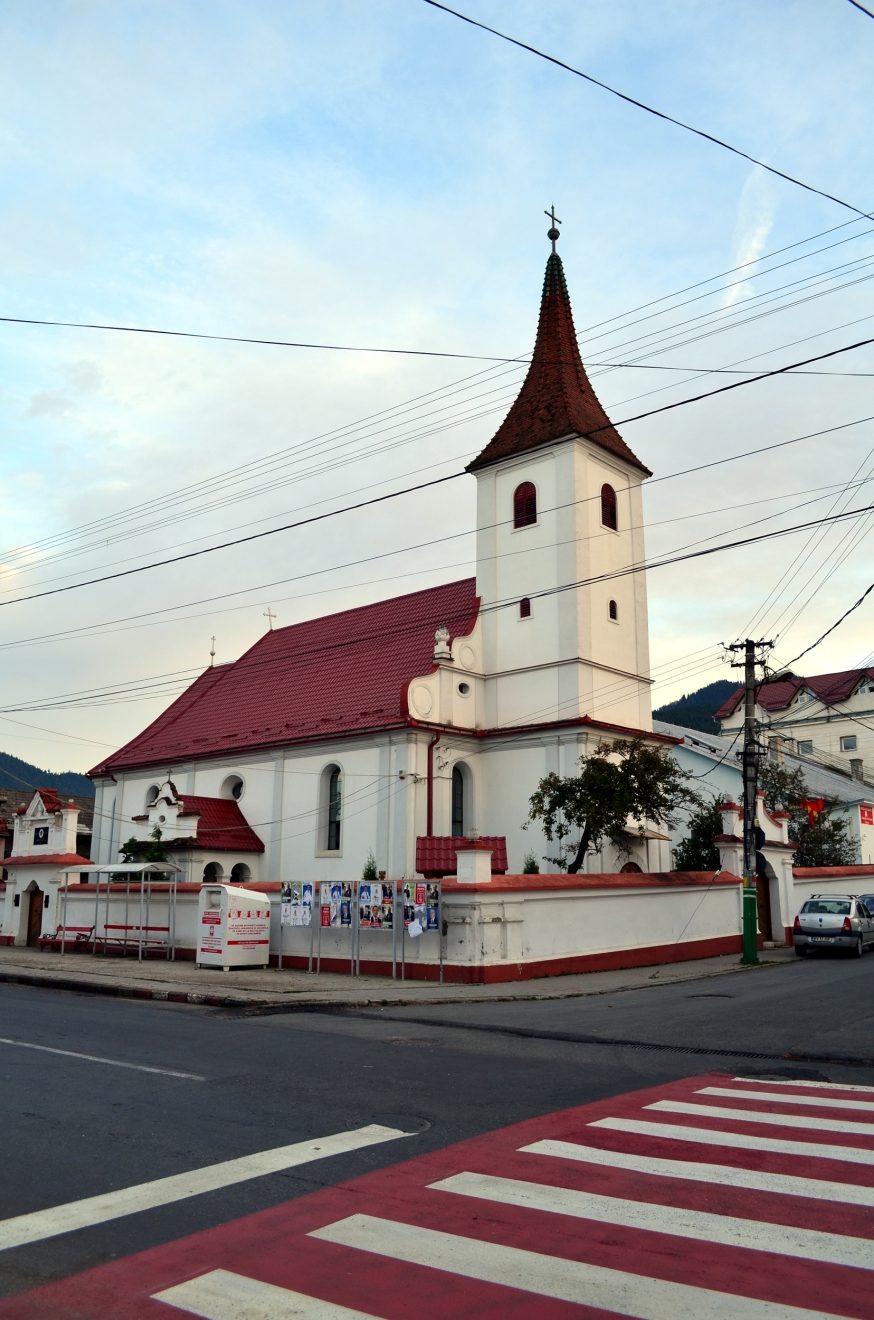
Bácsfalu, Villa Abbatis, Batschendorf, Baciu is part today of Săcele Municipality, until 1950 bein...
Read moreLocal products
Programs
If you visit the Bârsa region (Brașov county) you can enjoy the ski slopes in the alpine area in t...
Read moreWith the advent of winter and the deposition of a thick, stable snow, the Seven Village area awaits ...
Read moreIn the heart of Barcaság - Țara Bârsei, located at the base of Mount Postăvaru, Poiana Brașov i...
Read moreActivities
The Seven Ladders Canyon (Romanian: Canionul Șapte Scări) is a mountainous canyon in the county ...
Read more